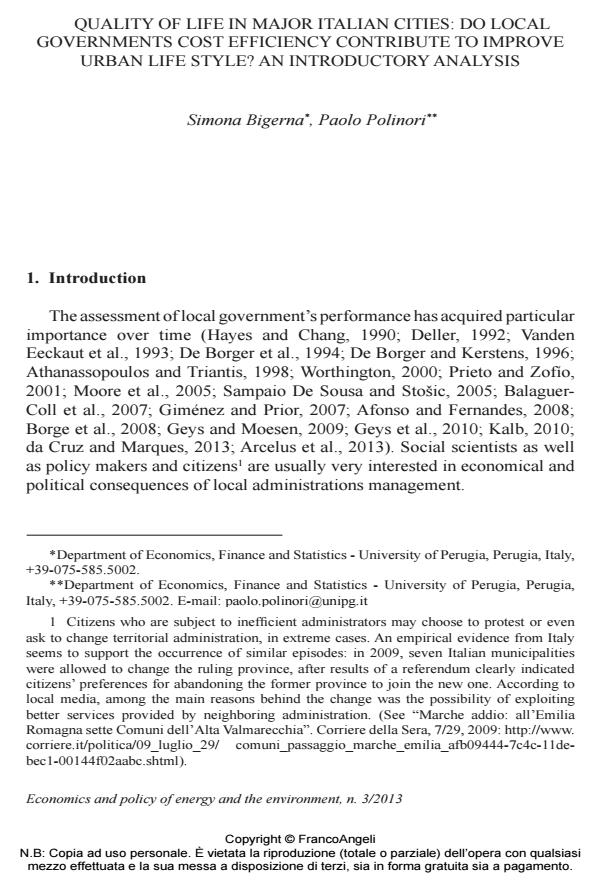Quality of Life in Major Italian Cities: Do Local Governments Cost Efficiency Contribute to Improve Urban Life Style? An Introductory Analysis
Titolo Rivista ECONOMICS AND POLICY OF ENERGY AND THE ENVIRONMENT
Autori/Curatori Simona Bigerna, Paolo Polinori
Anno di pubblicazione 2014 Fascicolo 2013/3
Lingua Inglese Numero pagine 24 P. 121-144 Dimensione file 818 KB
DOI 10.3280/EFE2013-003005
Il DOI è il codice a barre della proprietà intellettuale: per saperne di più
clicca qui
Qui sotto puoi vedere in anteprima la prima pagina di questo articolo.
Se questo articolo ti interessa, lo puoi acquistare (e scaricare in formato pdf) seguendo le facili indicazioni per acquistare il download credit. Acquista Download Credits per scaricare questo Articolo in formato PDF

FrancoAngeli è membro della Publishers International Linking Association, Inc (PILA)associazione indipendente e non profit per facilitare (attraverso i servizi tecnologici implementati da CrossRef.org) l’accesso degli studiosi ai contenuti digitali nelle pubblicazioni professionali e scientifiche
In this paper we set forth a novel analysis of urban quality of life (QoL) using Data Envelopment Analysis (DEA) approach. We use a newly constructed municipality database, which includes all 103 provincial capitals. In our approach we follow a two-stage method. In the first stage, we estimate efficiency scores through a nonparametric DEA with desirable and undesirable outputs. Estimated rankings are compared to Legambiente index. In the second stage, we regress efficiency scores on economic, social and political variables. Our main objective is to estimate non discretionary variables effects on efficiency. According to Simar and Wilson (2007) results show that local government efficiency is highly heterogeneous and that there exists high correlation among our rankings and Legambiente index. Considering exogenous effects, geographical conditions and political aspects constitute the main determinants of municipalities’ efficiency.
Parole chiave:Data Envelopment Analysis; Two-stage; Quality of Life; Undesirable output; Local Government Efficiency
Jel codes:C24, C61, R38
Simona Bigerna, Paolo Polinori, Quality of Life in Major Italian Cities: Do Local Governments Cost Efficiency Contribute to Improve Urban Life Style? An Introductory Analysis in "ECONOMICS AND POLICY OF ENERGY AND THE ENVIRONMENT" 3/2013, pp 121-144, DOI: 10.3280/EFE2013-003005